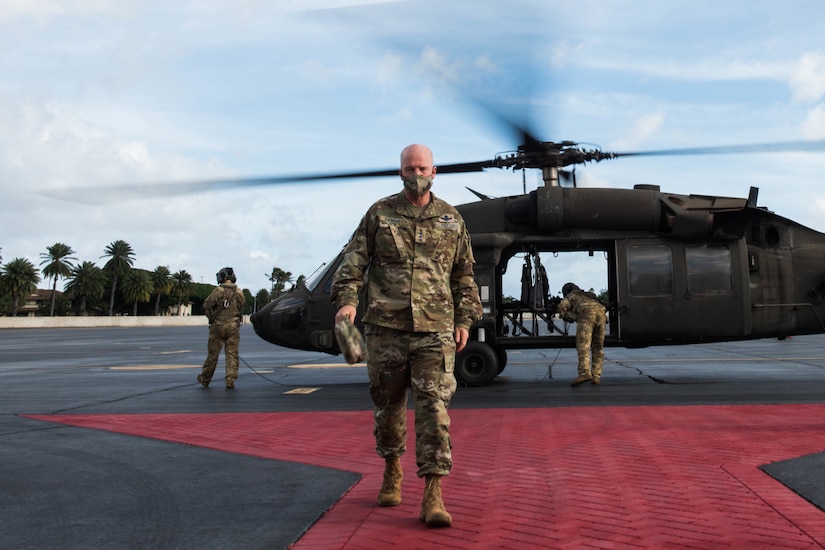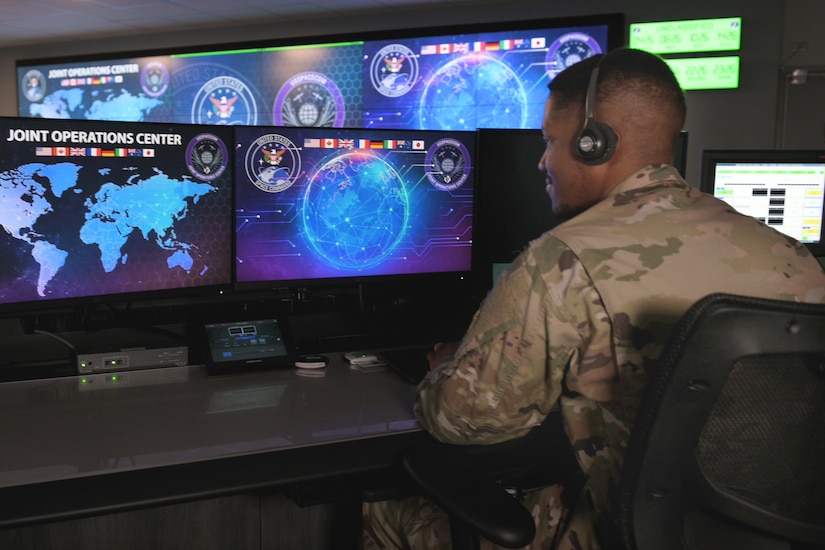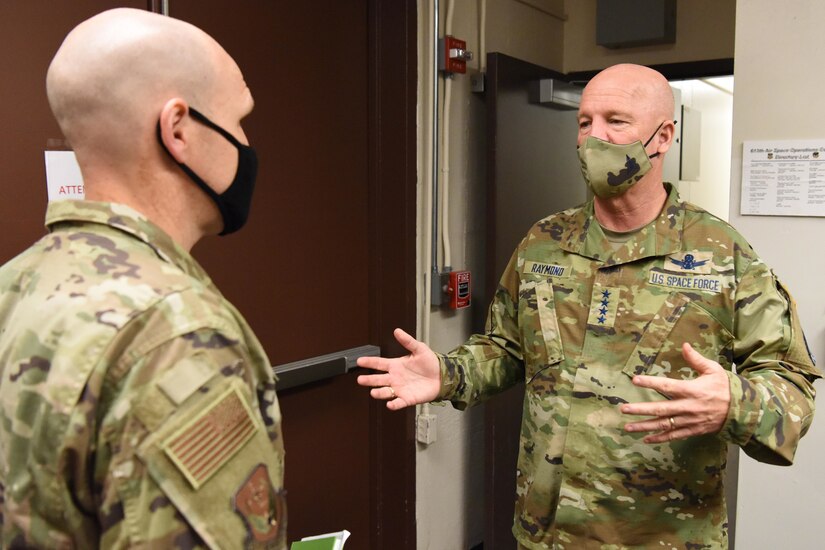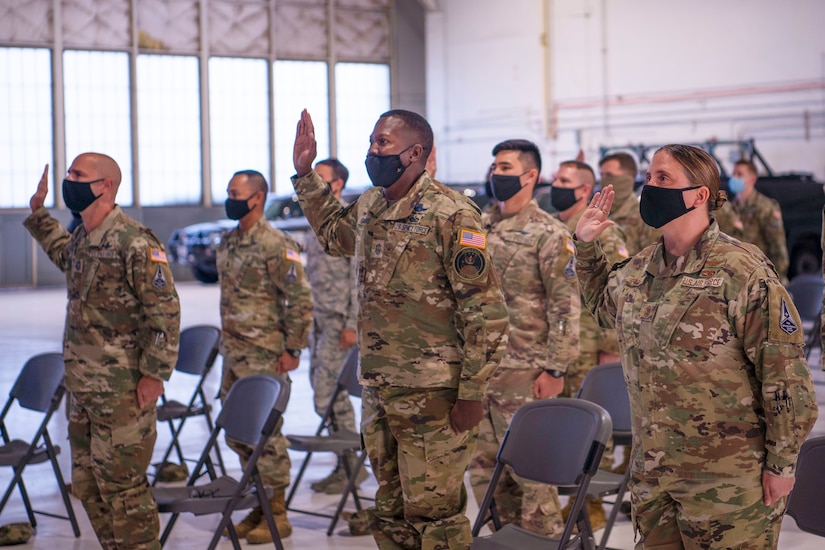Nov. 25, 2020 | , DOD News
Other nations are realizing the crucial role of space, as well, and the general is meeting with allies and partners to build on long-established military-to-military relationships. He concluded a visit with Pacific allies Saturday and spoke about the need for such outreach, how the new service operates and how service members are responding to it.

Raymond gave the interview during his flight from Hawaii to Colorado. He was in an aircraft traveling 500 mph over the Eastern Pacific, and the reporter was sitting in Alexandria, Va. The call’s clear sound quality would not have been possible without space capabilities. Raymond's aircraft navigated using the global positioning system. The aircrew received weather reports based on satellite information.
Space is a crucial domain, economically and militarily, and it must be protected, Raymond said.
The new service is less than a year old, yet it has made tremendous strides.
"Space really underpins… all of our instruments of national power," Raymond said. "It provides huge economic opportunity, scientific opportunity and military opportunity."
Many people call Operation Desert Storm the first "space war." U.S. strategic missile warning capabilities were used innovatively to detect tactical scud missiles. GPS made possible the "left hook" blow into southern Iraq.
"It was the first war where we integrated strategic space capabilities into theater operations," Raymond said. "And it provided us a significant advantage."
Since then, the strategic environment has changed considerably. Space was a benign domain in 1991, but it is a contested domain today. This requires the U.S. military to adapt and change, Raymond said.
"We have to train our operators differently, we have to have different space architectures, and we have to have partnerships," he said.
China and Russia caused this shift in the strategic environment. The two countries seek to stop U.S. access to space, and they are developing capabilities that would negate the U.S. advantage
"I think there's a realization amongst nations that access to space is no longer a given," Raymond said. "We've got to make sure that we stay ahead of this growing threat."

China and Russia have exhibited threatening behavior in space. Their capabilities include reversible jamming of GPS and communication satellites. The two nations are working on directed energy and kinetic destruction of U.S. assets via missiles on the ground. Raymond said that there are on-orbit capabilities which are very concerning. If people think the threat isn't real, the general points back to when the Chinese shot down a satellite in 2007.
This is why partnerships are so important to the United States and to the world. Space will be a trillion-dollar economy by itself over the next few years, he said, and "it offers us an opportunity to develop global partnerships that allow us to take a global perspective," he said.
During his Air Force career, Raymond served as the vice commander of the 5th Air Force based in Japan. He was there during the earthquake, tsunami and subsequent nuclear plant meltdown. U.S. forces based in Japan and in the Pacific came to the aid of the Japanese allies.
"I saw the value of that partnership, front and center," he said.
He saw the cooperation between the U.S. and Japan on land, sea and air and thought the two militaries needed to have the same cooperation and understanding about the space domain.
That is happening, not just with Japan, but with many close allies.
"We've really gone from partnerships that were just one-way data sharing arrangements — where we share space situational awareness information — to partnerships where we now operate together, train together, exercise together, wargame together, and where we're just beginning to develop capabilities together," Raymond said.
The United States and international partners are also talking about norms of behavior in space and how responsible nations act in the space domain.
Other nations are developing space commands. France stood up a Space Command in 2019. The United Kingdom has funds for a Space Command in their recently unveiled budget. Japan just stood up a new organization centered on space.
"Across the globe, there's a recognition that space needs to be elevated in importance to a level relative to everybody's security," he said.

The American military space effort — both the U.S. Space Force and the combatant command, U.S. Space Command — are not large organizations, but they have a large footprint. In addition to working with allies, Raymond has worked with the combatant commands to learn their needs, how they see the future and what sorts of capabilities they will need moving forward.
The Space Force is a global power, and the requirements have to be examined globally, as well. The force works with all the geographic combatant commands.
The Space Force celebrates its first birthday Dec. 20, 2020, and Raymond said the service has really been in the process of "inventing" itself.
"This service … has to be agile and lean to go fast," he said. "I think that's critical to our success in the space domain. I really believe that large organizations are slow, and I will do all I can to stay small."
Space itself is "fast." He noted that objects in space go 17,500 mph just to stay in orbit.
Inspired by the idea of traveling at the speed of space, the Air Force swiftly streamlined the creation of Space Force. It is not a numbered Air Force — a three-star position — and Raymond eliminated a series of O-6 commands.
"We wanted to reduce the decision space between the experts in the field and the decision makers," he said.
The Space Force staff was estimated to need 1,000 service members. It will have about 600 and is not growing, Raymond said.
If the command gets new missions, they may revisit the manning situation, but the service will never match the Army, Air Force or Navy in size.
"This is a small, highly technical service that provides value well beyond the size of the force structure," he said.
One example he gave was a squadron at Schriever Air Force Base, Colorado. It has about 100 personnel and operates the entire GPS constellation for the world.
"Small numbers of people can have a huge global impact," he said.

Raymond said he is seeing excitement once again in America about space.
"There's excitement across the nation I haven't seen since the Apollo days," he said.
There's talk of NASA moon landings again and eventual trips to Mars. The accomplishments of SpaceX, Blue Origin, Virgin Galactic, United Launch Alliance and other private firms are also fomenting interest.
In the Space Force, "everybody in this service has an extra bounce in their step, because the nation and the world understand just how valuable space is to our nation," he said.
The force has had no trouble getting volunteers. The service had to have an application process for those wishing to transfer from the Air Force.
"If you look at the Air Force Academy two years ago, there were 13 cadets who came to the force," he said. "This last year, we had 86. This year, it'll be 100."
The same thing is happening in universities and colleges around the country, with many applicants studying astro-engineering.
"Ten years from now, we're going to reap the benefits of this," he said.
Raymond knows what he is talking about. On July 20, 1969, the general was a kid in West Point, N.Y.
"I remember sitting on the living room floor watching Neil Armstrong first walk on the moon," he said. "And then I remember turning around and going to build an Apollo model rocket. I think the same thing is happening today."






No comments:
Post a Comment